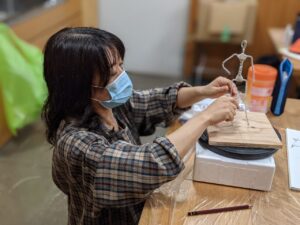“Draw what you see as it is”
Have you ever been told by your teacher that way?
If you are a medical student, you may sketch in anatomy training, and your academic advisor will say the same thing there.
The phrase “draw what you see as it is” is true. But it may actually be a misleading expression for learners.
What is “seeing”?
“Seeing” is a state in which the optic nerve senses the light reflected from an object. But the information processing after this is very complicated.
The brain that receives the information from your optic nerve sifts “this is necessary, this is not necessary”.
The “sieve” criteria is what you consider consciously and unconsciously important.
“What you think is important” is “knowing what it is” as a premise.
It’s not an extreme story. You can’t see what you don’t know, no matter how in front of you.
What’s more, once you see something, and you decide it’s not important unconsciously, you’ll never see it again.What is sifted never come to consciousness.

Why does your brain omit what you see?
The reason why such a thing happens is that the brain is very lazy.
It seems that humans will starve to death in an instant when the brain really exerts 100% ability. Since the evolution of the digestive system cannot keep up with the evolution of the brain.
It is in a state where the brain is braked 98% so as not to run out of energy.This forces the brain to become lazy.
This was a YouTube video of a famous brain function scholar, Dr. Hideto Tomabechi.
It was a story in a context that has nothing to do with drawing.
But it explains very briefly what the difference between “seeing” and “seeing when drawing” is.
He explains that without recognition, you cannot see it even in front of you, using the following example.
“Even if there is a mobile phone on the desk, it is invisible to the primitive man.”
If you bring your cell phone in front of him and show it off, he can see it.
But if it’s just on the desk, the primitive man cannot see it because he doesn’t know what it is.
Recognize and see, then draw.
This story is very similar to the phenomenon of getting better at drawing.
If you do not know the structure of the human body and how it has developed from the embryo, you won’t be able to see or draw even if you observe the model.
Vice versa, if you recognize them and observe them, you will be able to receive a large amount of information from the model at a glance.
And you can express “what you see” on your screen.
“What you see” is not just the bundle of light that your eye receives. It’s something your brain recognizes from the beginning and decides it’s important.
That is why artistic anatomy is necessary when drawing figures.





